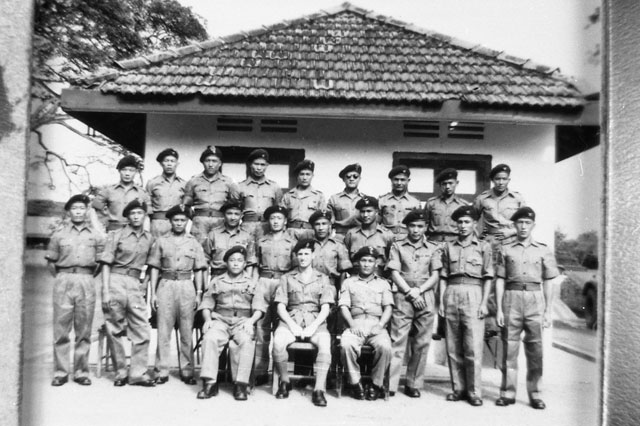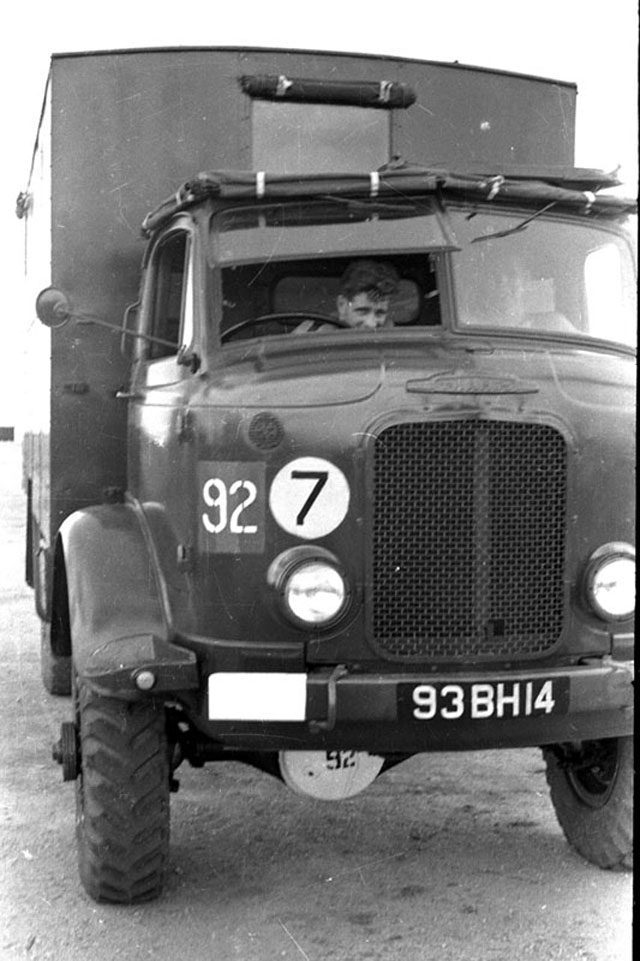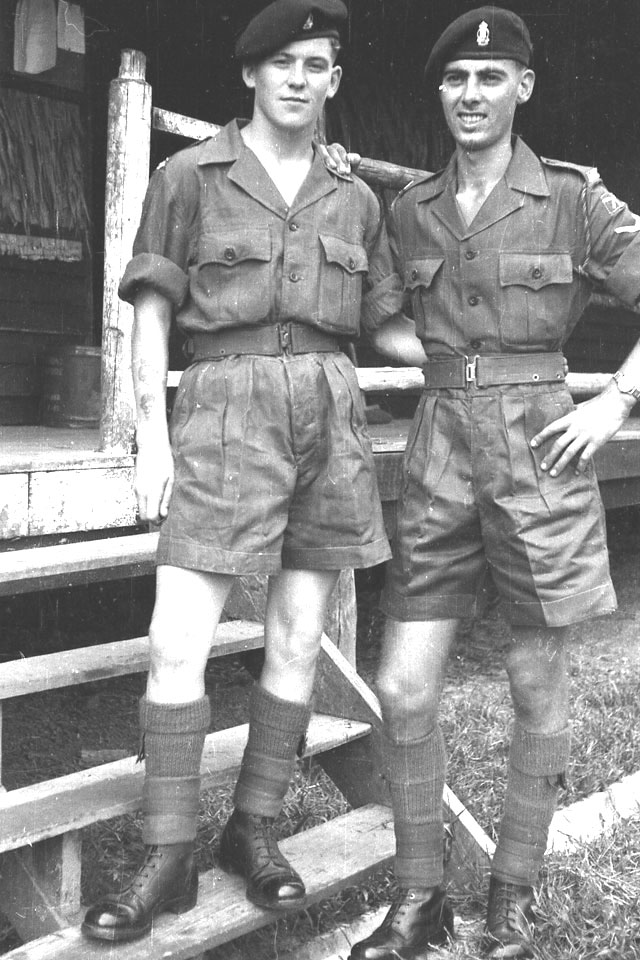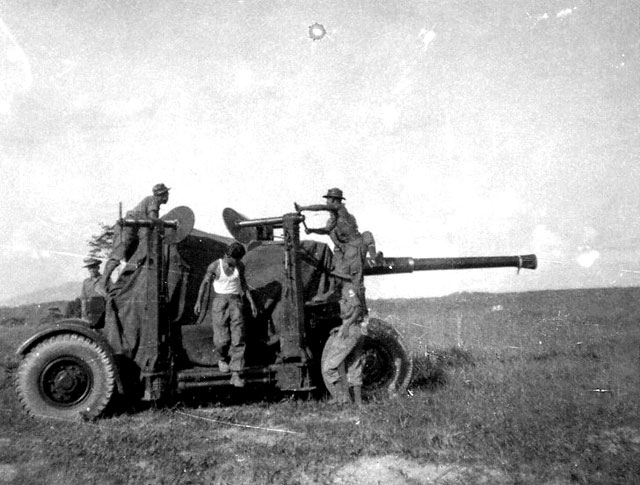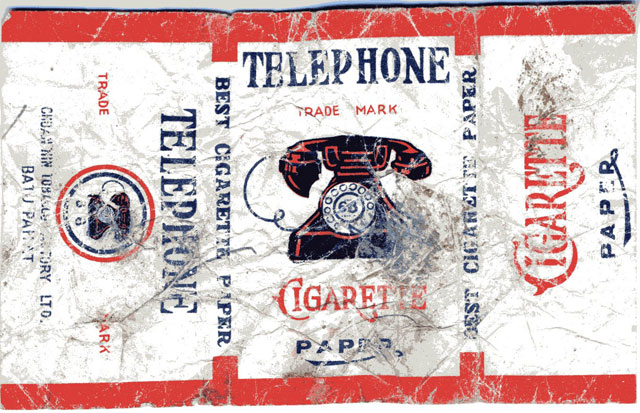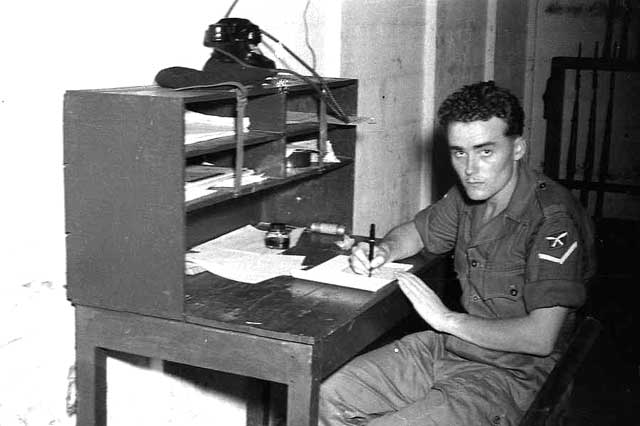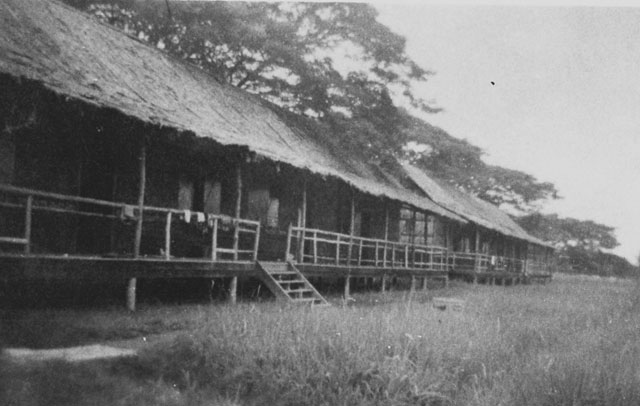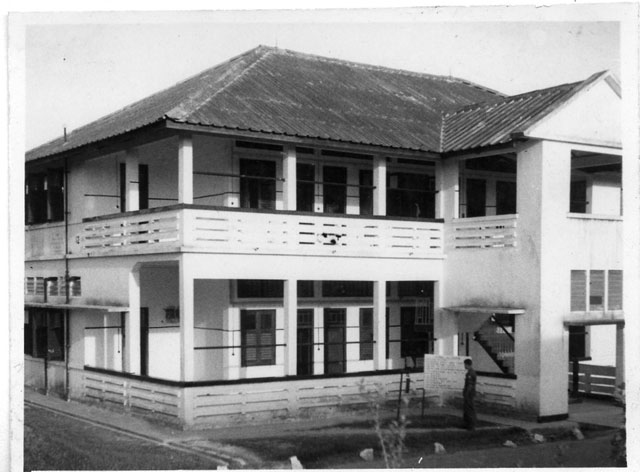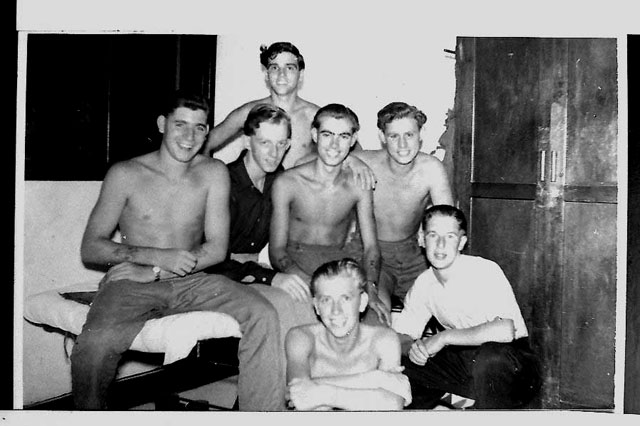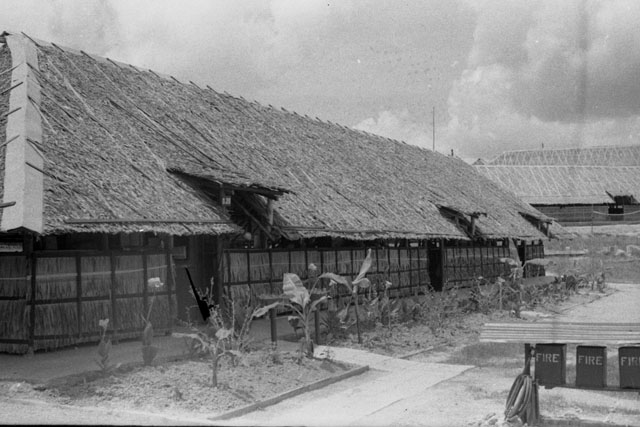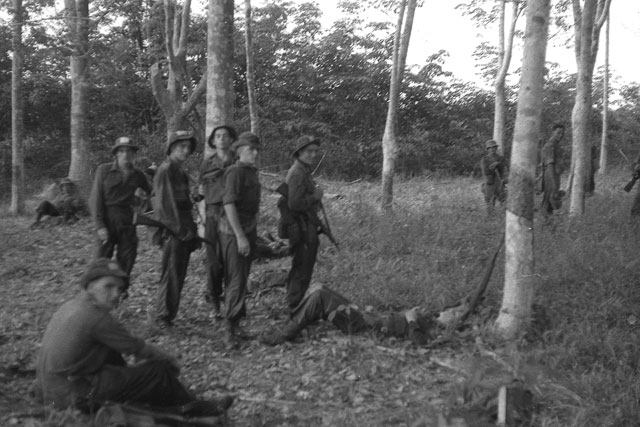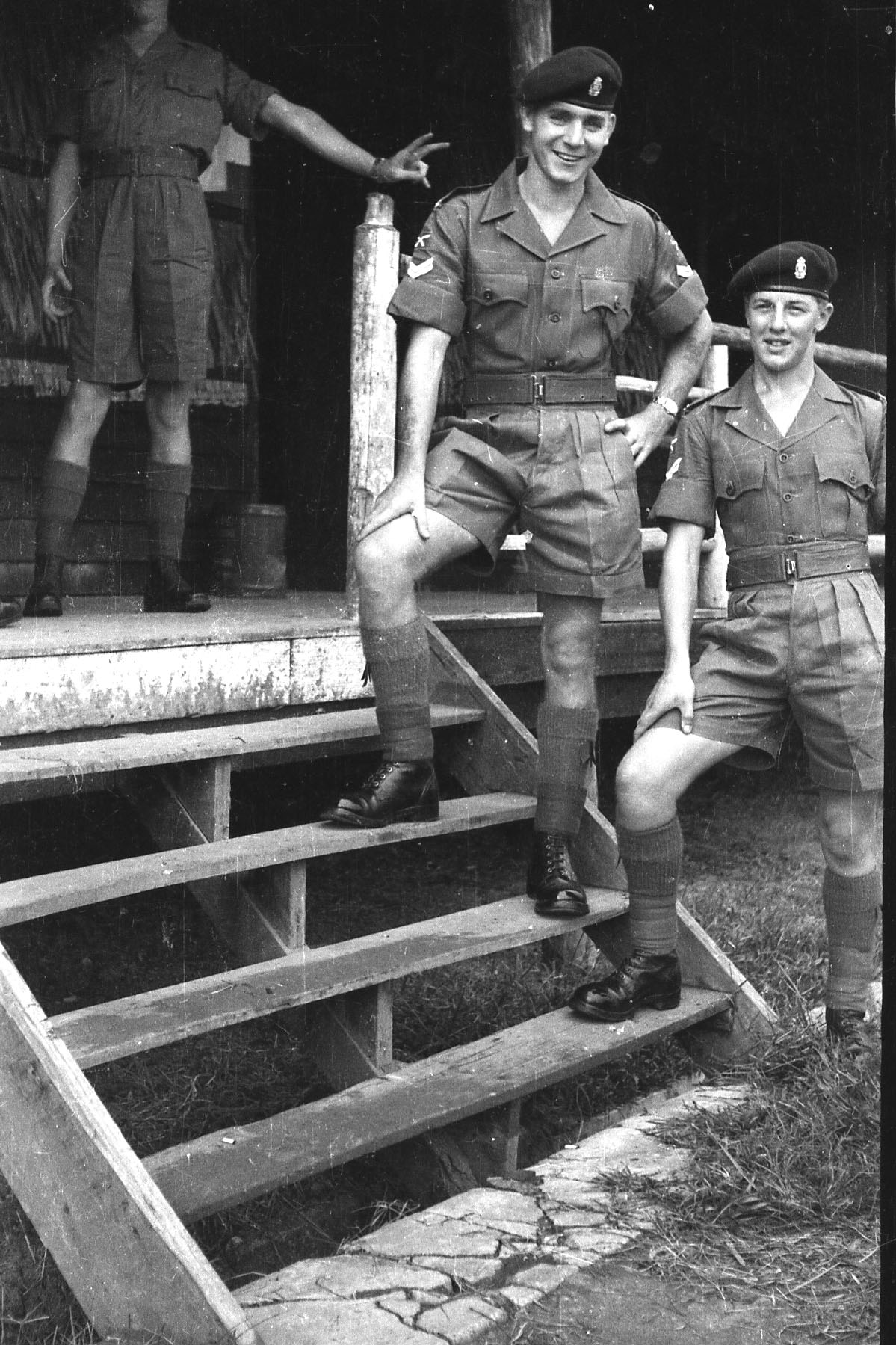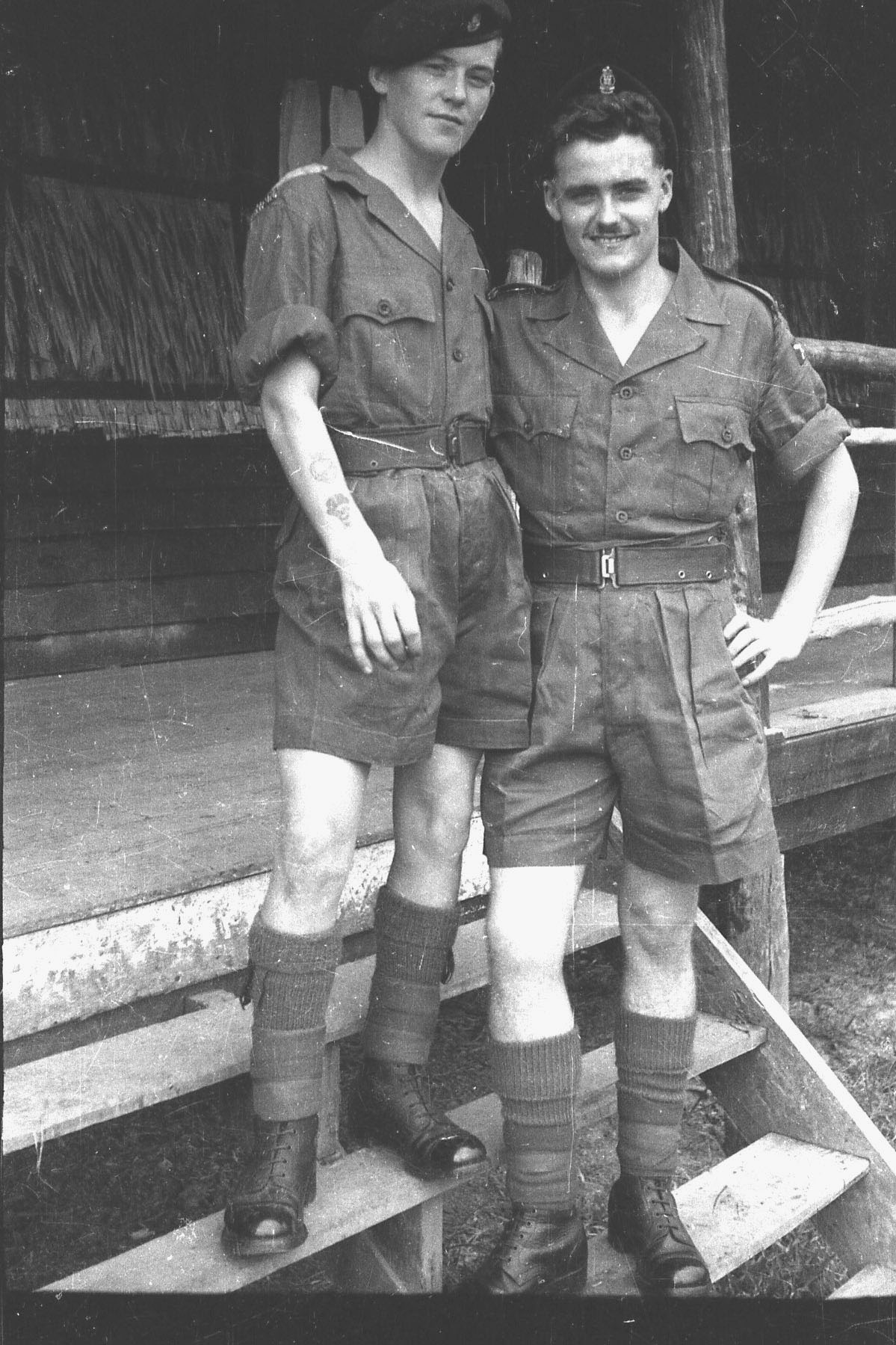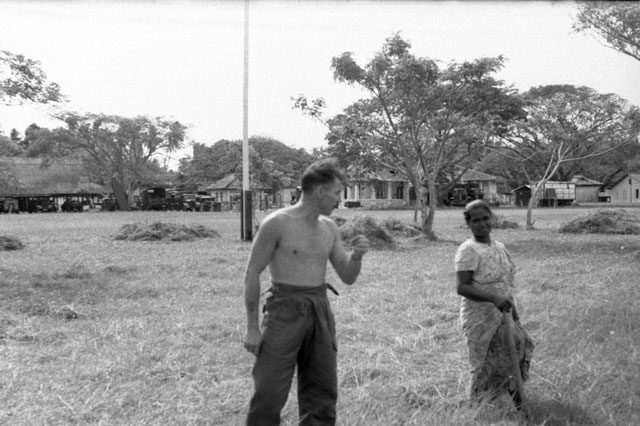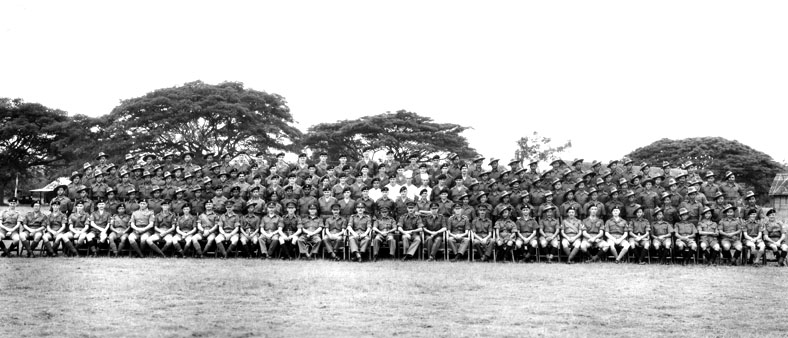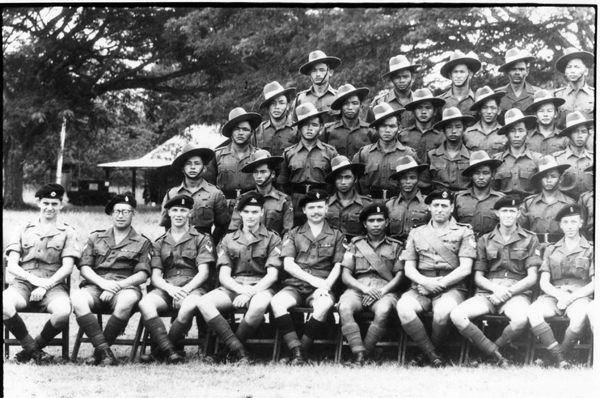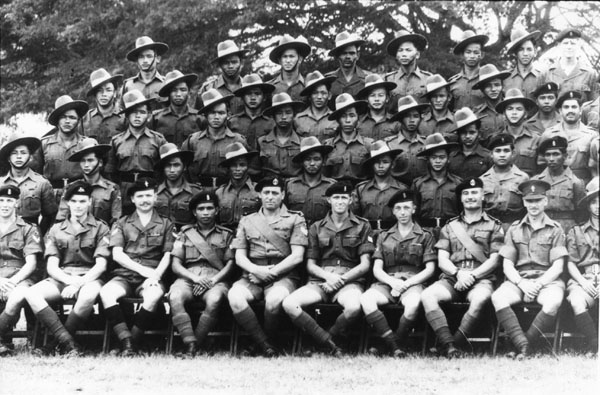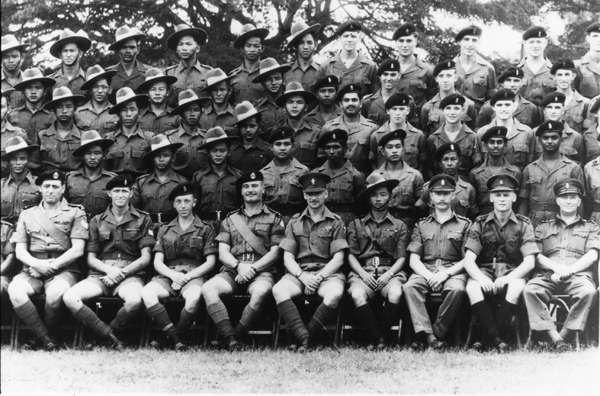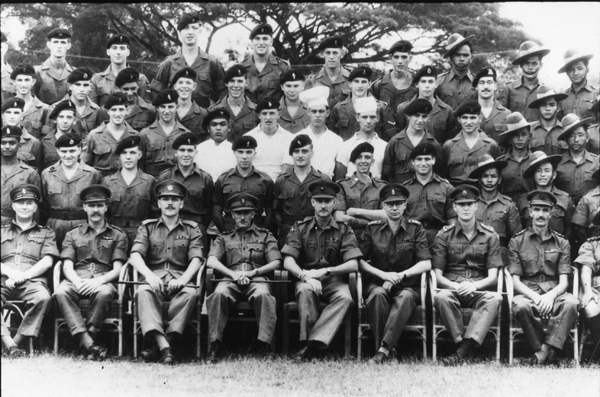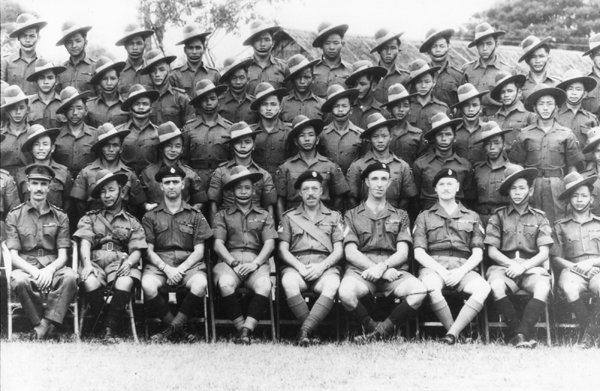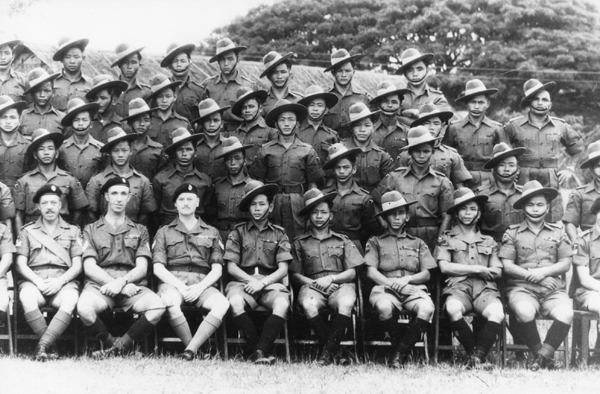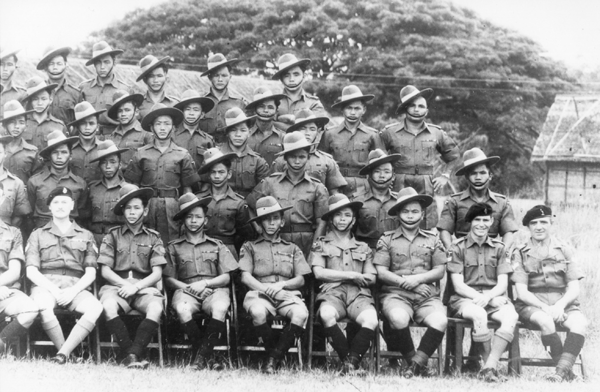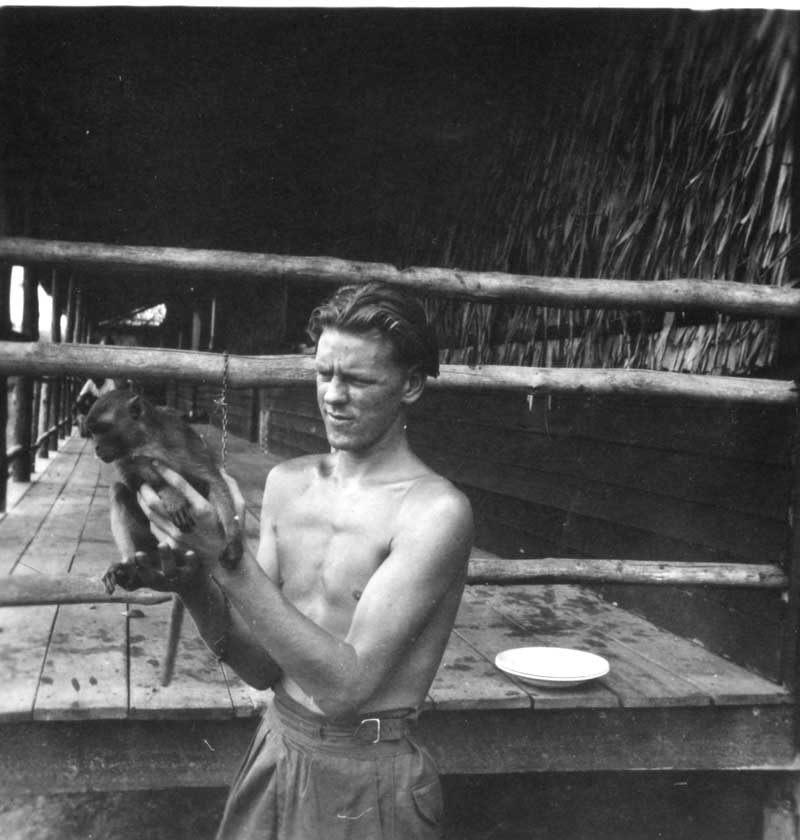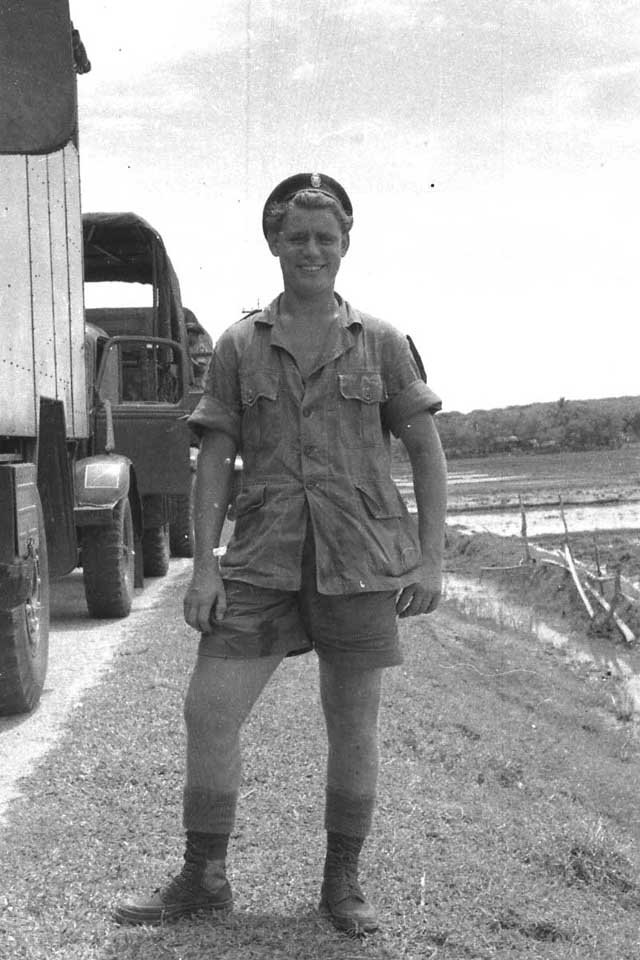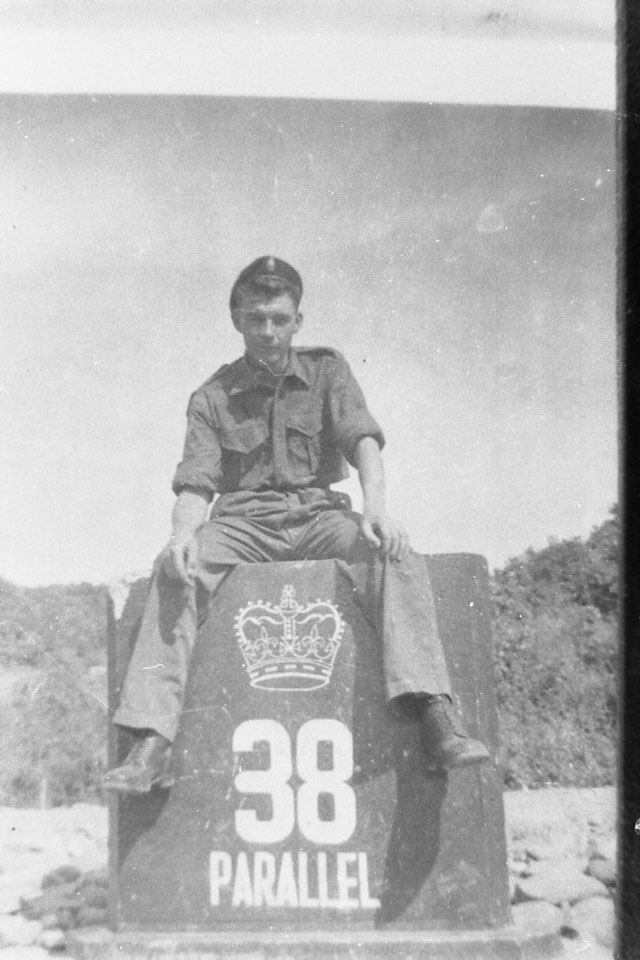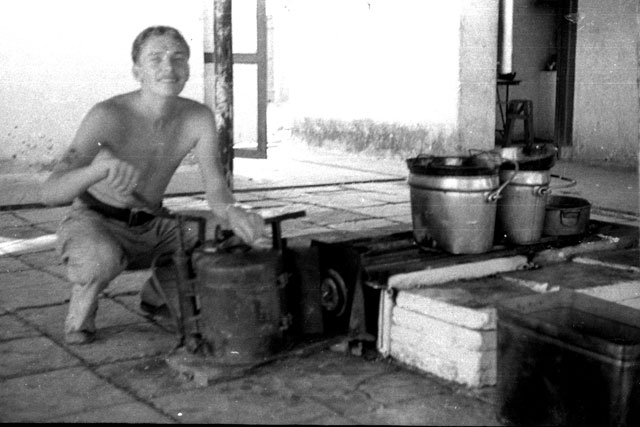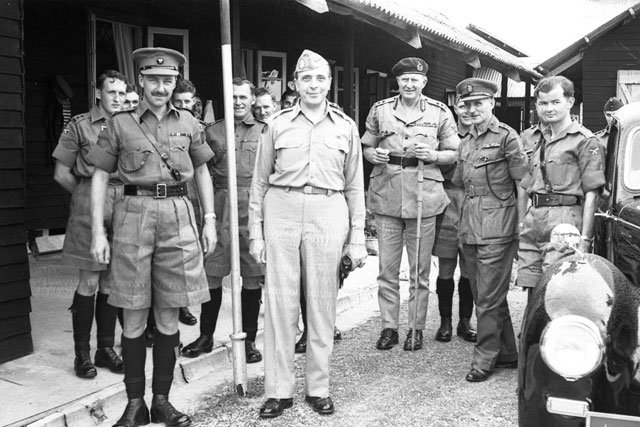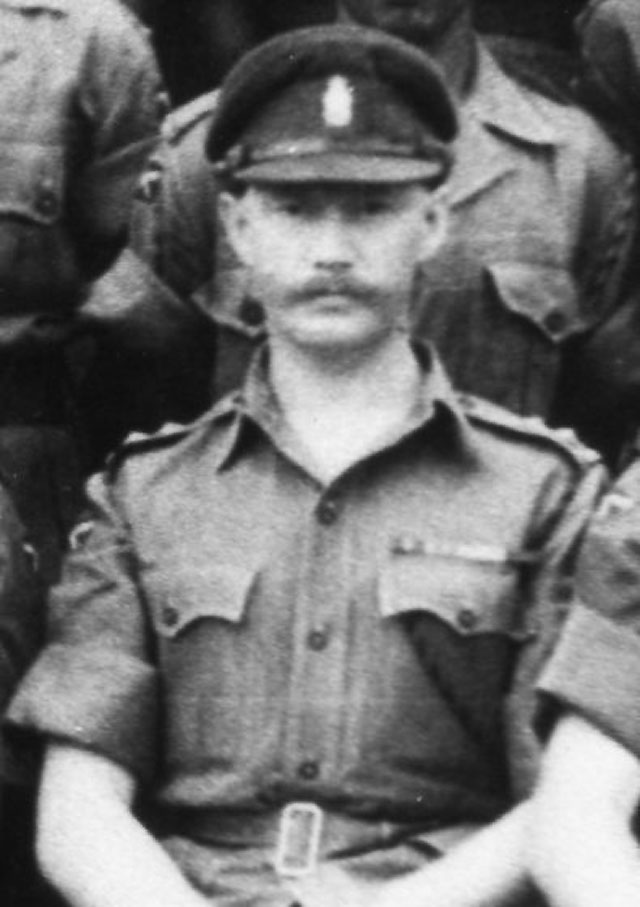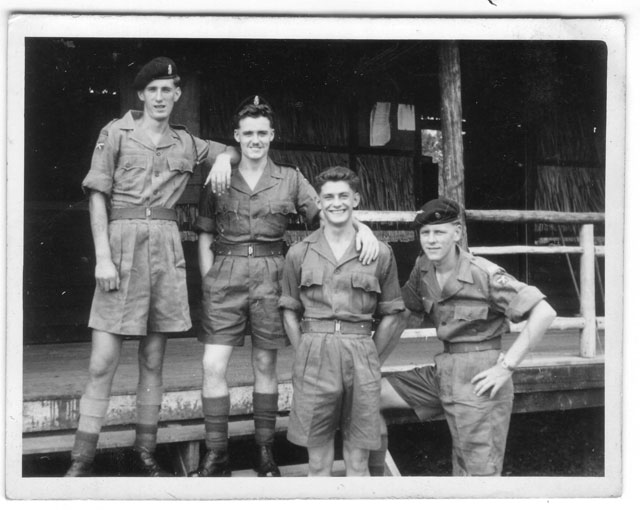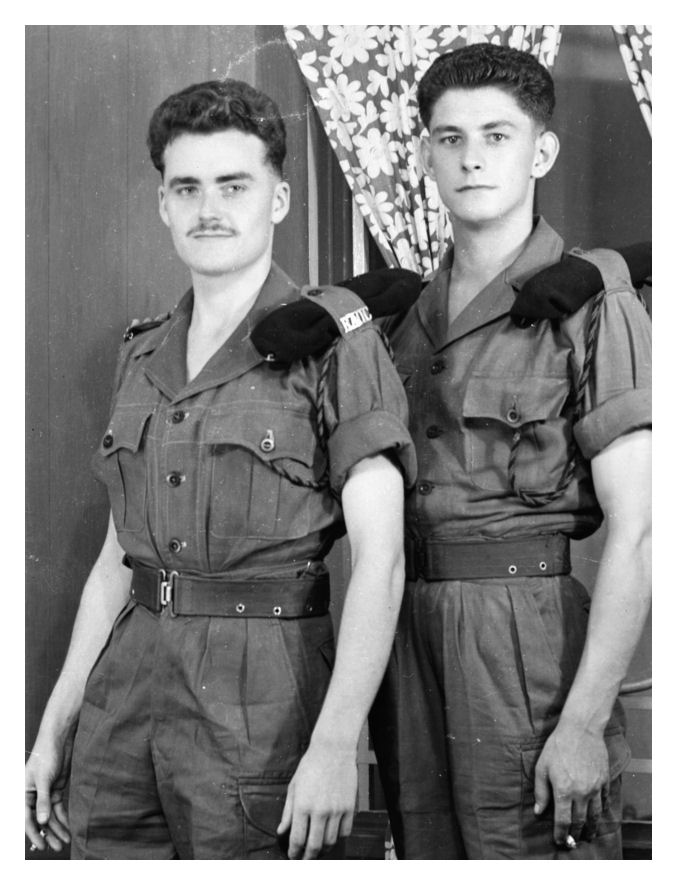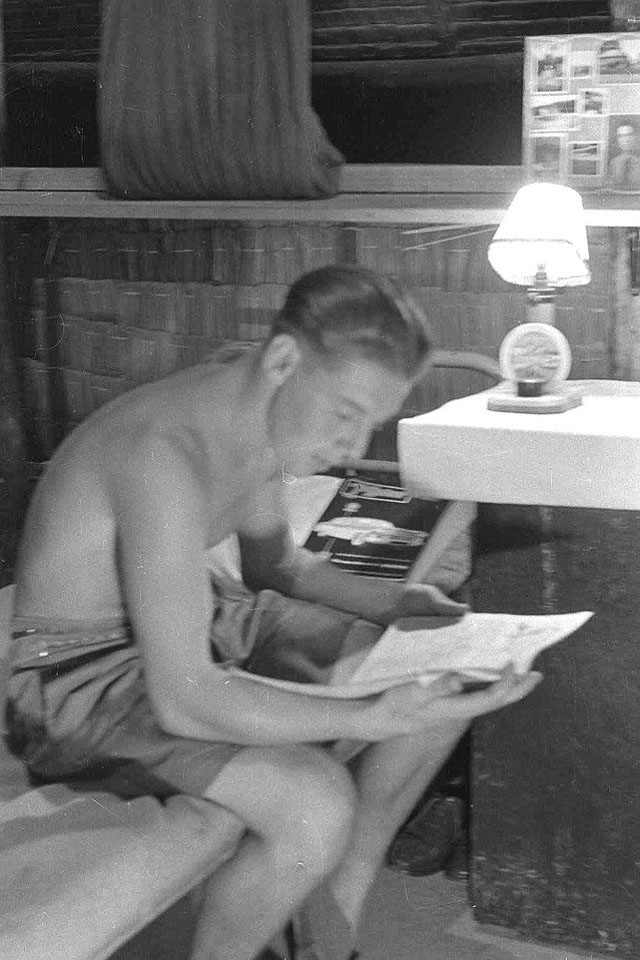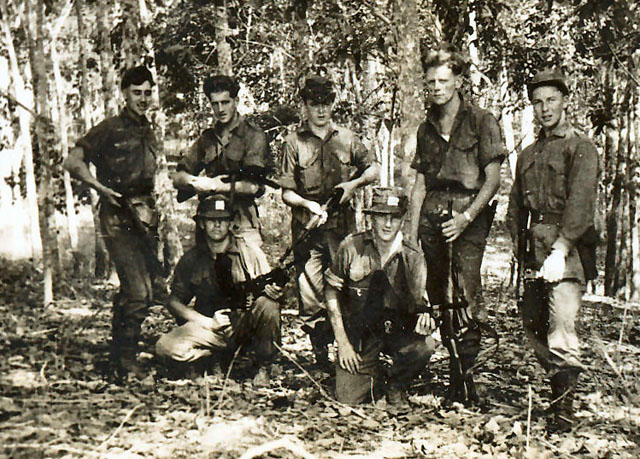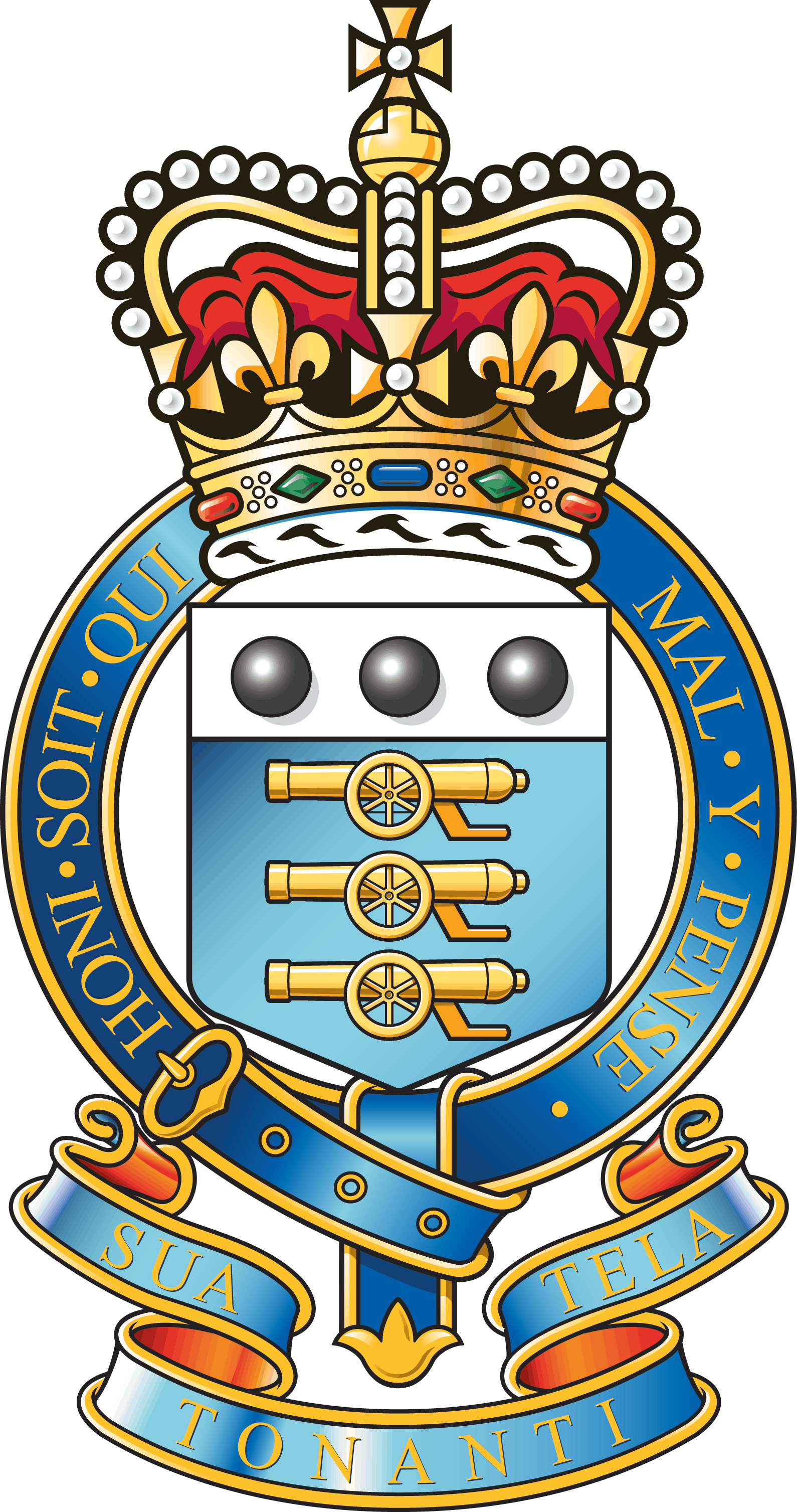
PERSONNEL
Cigarette paper wrapping from C.T. camp.
[Ref: RG-97]
The wrapping of a Cigarette paper packet dicovered in a C.T. camp during a weekend opp. in the "ULU". The camp was in an Oil Palm grove surrounded by swamp, the camp "base" was made up of a thick layer of foliage such as palm leaves and scrub so as to raise the surface above the water level of the swamp. No C.T.s were evident at the time, they had abandoned it earlier.
Our Living Quarters (Basha) Muar 1955
[Ref: RG-94]
Our Basha at Muar was on "Stilts" as it was very close to the Muar River which was subject to flooding. A "Basha" was constructed with wooden poles of about 2-4 inches in diameter, similar to the "Rustic" poles we can buy today from the Garden Centre, these were used for the main frame. The roof was made up from smaller diameter poles fitted verticaly with the "Palm leaf" thatch tied to these. The Palm leafs were split in half down the centre then tied to the vertical poles. The sides had a 6 inch gap at the bottom and about 15 inches at the top with a 18 inch roof overhang together with no doors so there was plenty of room for air to flow through.
The first personnel to join 35 OFP
[Ref: RG-55]
The first of 25 B.O.Rs. to form the unit at 30 Btn. R.A.O.C. based at Keat-Tong in Singapore. Cpl. Maddox, Cpl. McCullock, Geordie Bowe, Jimmy Pickering, Pte. Penfold and the Author. One of the main tasks during the formation of the unit was to record the vast range of vehicle and smallarms spare parts onto a "Cardex" filling system, this entailed entering the part number of that part, the vehicle Number and the bin location in that vehicle. We had 9 Commer 4 X 4 "Store Bins" they were numbered 1 to 9, each of the 9 vehicles had a cardex system related to the spares it carried. A stomeman was allocated to each vehicle, he was also the driver. Those storeman who could not drive at that time they received driver training around Singapore, this was caried out by the qualified drivers on the unit.
Our Basha - Kluang 1956
[Ref: RG-58]
Our living quarters complete with FREE FLOW AIR CONDITIONING, open to the elements top and bottom. A "Basha" was constructed with wooden poles of about 2-4 inches in diameter, similar to the "rustic" poles we can buy today from the Garden Centre, these were used for the main frame. The roof was made up from smaller diameter poles fitted verticaly with the "Palm leaf" thatch tied to these. The Palm leafs were split in half down the centre then tied to the vertical poles. The sides had a 6 inch gap at the bottom and about 15 inches at the top with a 18 inch roof overhang together with no doors so there was plenty of room for air to flow through.
A wellcome break
[Ref: RG-95]
Personnel of 35 OFP taking a break during a weekend opp. in the "ulu". This opp, was a combined effort by the Gurkhas, British and Commonwealth infantry also the Royal Artillery and the R.A.F. to "flush-out" C.T.s in a swamp north east of Kluang, the previous week it had been shelled by the Artillery. The following mornning 3 Lincolns bombed the C.T. camp, this was followed by the ground forces conducting a sweep through the swamp, at times waist deep in "water".
HQ 63 BDE Personnel. Muar 1955
[Ref: RG-11]
This photograph was taken in mid 1955 of all personnel at 63 Gurkha Infantry Brigade HQ. The Garrison buildings are in the background. The author of the photograph is unknown. TO ASSIST IN THE IDENTIFICATION OF A PERSON, 9 ENLARGED SECTIONS OF THIS PHOTOGRAPH ARE DISPLAYED NEAR TO THE END OF THIS GROUP.
Lighting up the Field Kitchen
[Ref: RG-71]
Two A.C.C. (Army Catering Corp.) cooks were assigned to the unit while it was at 7 F.O.D. Kuala Lumpur known then as 63 Brigade O.F.P. they were Privates Franklin and Plumpton, (see Corp. Gazette Sep. 1955 p222) Franklin is seen here getting meal ready which includes lighting the field kitchen, (MUAR 1955). For a period of about two months while the unit was waiting to move into a BASHA within the confines of 63 Brigade. All food had to be cooked on this cooker. It is fired by pressurized and subsequently vapourized petrol and could be a hazard if correct procedures were not followed, the tank holds two gallons of petrol.
General lemnitzer at Kluang
[Ref: RG-29]
General Lemnitzer C-in-C United States Forces far East with Field Marshal Sir Francis Wogan Festing, C. in C. British land based forces Far east photographed outside the officer mess during a visit to 63 Gurkha Inf. Bde. at Kluang in 1956. (I had been asked to take photographs of that visit). This image is repeated a new section with more related images. See:- Generals and Staff Officers.
Ray Gipson relaxing in Kluang 1955
[Ref: RG-9]
A moment to relax after a days work at the "Field Park". Note the "Mozzy" (Mosquito) net rolled up on the shelf, a packing case for a cupboard, the lamp is made up from a length of bamboo with a timber base, bulb holder and shade were purchased. A typical days work for an M.T.Office (Motor Transport) N.C.O. would include the updating of vehicle records from the previous days journeys, noting any vehicle malfunctions or problems reported by the driver and subsequently notifying the R.E.M.E Technicians (L.A.D. Light Adjustment Department) who would carry out any minor repairs. Notify each vehicle driver when his 406 was due. Each vehicle had to have a monthly inspection and known as a 406. The term 406 relates to the Vehicle Book which is number 406, the inspection was similar to a U.K. MOT, this was carried out by the R.E.M.E (Royal Electrical and Mechanical Engineers). If a vehicle had any major defaults it would have go into the R.E.M.E workshops to be rectified. The unit had a total of 19 vehicles, 9 Ford Store Bins, 6 Ford W.O.T.6 3 ton cargo trucks, 3 were later replaced by BEDFORD R.L.s) due to broken engine connecting rods, a weak point with that V8 engine. 1 Morris M.R.A.1 a 1 Ton cargo, a Leyland Hippo 10 ton MK 1, Ford Willys Jeep and a Matchless 350 (G3L) Motor bike.
Personnel from 35 O.F.P.
[Ref: RG-7]
A group of Personnel from 35 O.F.P. taking a break during an opp. in the "ULU" (Jungle). Although we were classed as a "working " unit personnel from the unit often volunteered to go out and support other infantry units, mainly the Gurkhas. If it was a "RED" alert, that was when "CTs" were known to be active in the area you had no choice, you were called out. Weapons in the picture are, Bren gun, Mk5 Lee Enfield Rifle which is a shorter version of the WW2 Mk4,which we used in basic training, the Mk5 also has a flash eliminator on the end of the barrel both that and the Bren used the same 303 calibre ammo. The Mk5 Sten gun , as seen here with the author on the right of the picture used 9mm ammo.,the magazine had a capacity of 31 rounds but 29 rounds was the recommended as any more there was the possibility for the sten to jam. A pouch holding 3 magazines was normaly carried.
